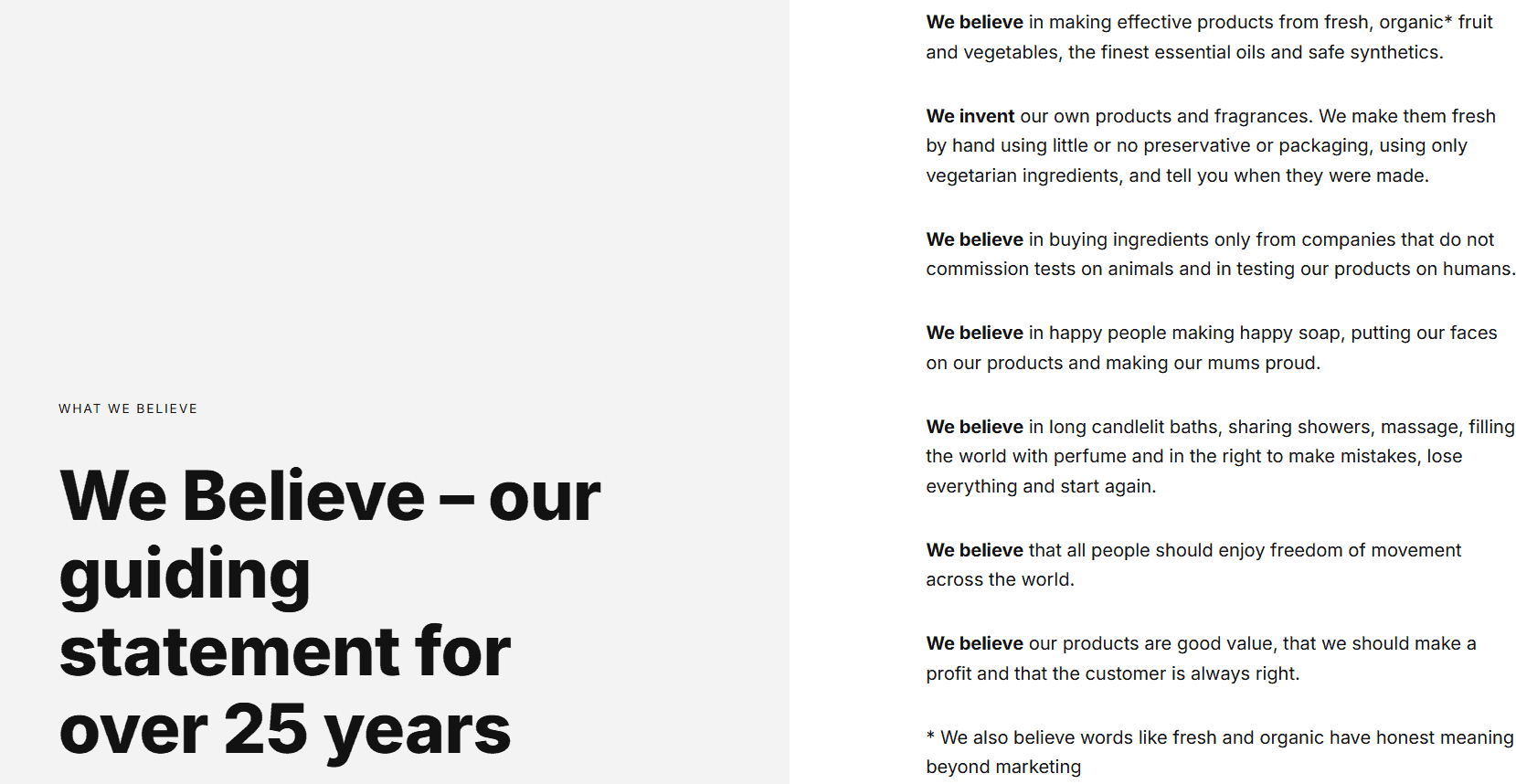Every small business marketer has to take marketing risks with brand imaging. Embracing this risk can lead to exceptional rewards, but it can also backfire.
If you’re planning brand image changes and want to minimize risk, you’ve come to the right place. And no, it’s not just about luck.
Your brand image is how your customers and target audience view your brand.
When done right, your brand image can communicate your values, differentiate you from your competition, and enhance brand loyalty. On the other hand, a good brand image can drive away prospects, reduce your brand value, and save you money and time.
According to Kotler, your brand image is the “total set of beliefs, ideas, and perceptions about a brand in a consumer’s memory.” Your brand image is influenced by everything from your product packaging to your social media graphics.
In this blog post, we’ll take you through:
- Common branding mistakes SMBs make.
- Strategies to avoid branding mistakes and thrive.
Table of Contents
Mistake 1: An Inconsistent Brand Image
Building a strong brand image takes more than designing a great logo—it’s about staying consistent in everything you do.
Create a consistent and engaging user experience across all channels and all touchpoints. 6 out of 10 companies state that a consistent brand image added a 10-20% increase in revenue.
The bottom line is—consistency with your logo, fonts, colors, messaging, and tone of your brand image prevents confusion. People associate consistency with trust, so tap into this instinct to leave a positive brand perception with customers.
For example, if your small business uses a professional, authoritative tone in blogs, you can only afford to seem somewhat casual on your social channels. Stay in line with your overall brand image and the persona you want to project.
How to avoid it
- Invest in a style guide. This guide includes aspects like your ideal customer’s pain points, tone and messaging, content creation guidelines, and visuals across all channels and touchpoints.
- Keep the conversation flowing. Your brand image involves many moving parts, so it’s important to keep communication flowing to keep everyone on the same page.
- Enforce your brand guidelines. While 95% of companies have brand guidelines, only 25% actively implement them. Stand out with your implementation.
Mistake 2: Ignoring Your Target Audience
Your ideal customer persona is a compass to navigate the stormy seas of brand identity. Many small businesses and startups need to invest more time and energy into understanding their target audience.
The key is to build an emotional resonance with your target audience.
Small businesses may invest a lot in product features to target customer pain points. But rather than presenting them as features, it’s wiser to showcase precisely how your features will make their lives easier.
Colgate is a brand that almost everyone recognizes for their top-notch dental products. Their foray into frozen foods didn’t go as planned, as audiences needed help to identify their brand with the new product.
Colgate learned from the foray and implemented the feedback of their audience.

How to avoid it
- See your brand from the audience’s perspective. Tailor each message to their interests.
- Use customer personas to define your ideal target audience. Get as detailed as possible.
- Create a customer journey map with all touchpoints.
- Incorporate customer feedback and run A/B tests to see what’s working.
- Use tools like SurveyMonkey, and Google Analytics to get regular feedback and iterate your strategy.
Read more: 9 Types of Branding and What They Really Mean
Mistake 3: Copying Competitors
While competitor analysis is important, replicating their marketing strategy is a costly mistake. Study the competition, but with the intent of differentiating your brand.
After all, other companies can copy your style, pricing strategy, and marketing strategy. However — if you do it right — they can never replicate genuine customer care and delight at each touchpoint.
Here’s a great example from Carvana. They showcase superior customer services with a tongue-in-cheek look at car salesmen to stand out from competitors.
How to avoid it
- Get clear on your brand values and USPs. Highlight these themes to bring out a strong brand identity.
- Leverage competitor analysis to differentiate your brand, not to imitate them.
- Avoid brand dilution by leveraging your authentic voice and messaging and staying consistent.
Mistake 4: Underestimating Visuals
Ignore the impact of a consistent visual identity at your peril! We’re not being dramatic. Cutting corners on design, logo, website design, and images can prove costly in the long run. After all, humans are visual creatures.
Here’s a great example of a small business visual image success from Pan Pan Atelier. Notice the visual consistency with their webpage, offline assets, and packaging.

How to avoid it
- Invest in quality designs and logos. Use low-cost tools like DesignWizard or Adobe Spark.
- Create a color palette that aligns with your style guide and remain consistent with them.
- Create a logo and brand image that appeal to your target audience.
Read more: Understanding the 4 Key Steps to Brand Development
Mistake 5: Neglecting Brand Storytelling
Your brand storytelling creates an emotional connection with your audience. It’s what makes audiences resonate with your messages and trust your brand.
Brand messaging and narrative are the pillars of your brand identity.
For example, Pan Pan Atelier‘s visuals are a modern twist to an ear of wheat.
Tell the story behind your branding to captivate your audience. This ties in with their mission to revive old breadmaking techniques and serve today’s customers with love. So, tell your story and tell it well!
How to avoid it
- Clarify your brand values, mission, and vision. Share narratives about your brand’s history and the visionaries behind the products.
- Share customer testimonials and success stories that speak to your target audience on a human level.
- Your tone, narrative, and voice must stay consistent across channels and touchpoints.
- Get creative, but stay true to your brand values and vision.
Mistake 6: Lack of Transparency
Why should customers trust your brand and spend their hard-earned money?
Transparency is key here. Two brands may sell similar perfumes, but you’re likely to trust the one that’s open about its sourcing, values, and business practices.
Brand transparency showcases a real commitment to valuing all stakeholders, including employees. This drives sales and prevents churn in the long run.
Around 42% of consumers don’t trust brands, so this is also a way to stand out and build lifelong customer loyalty. Here’s a great example of transparency from Lush, a cosmetics brand.

How to avoid it
- Disclose your best business practices, commitment to stakeholders, and customer communication. Handle negative feedback with grace. Conduct external audits where needed.
- Leverage brand tracking to monitor brand perception as you improve your transparency.
Read more: Mastering Brand Storytelling: Strategies and Examples
Mistake 7: Not Engaging with Customers Online
Imagine this scenario. A prospect had trouble signing up for the free trial. They post on Twitter that they had a bad experience with the sign-up.
Do you ignore it?
Or do you reply to them and fix the issue? The first response needs to reflect your brand better.
You just pushed a prospect away. Poor or insensitive responses to customer feedback reflect poorly on your brand. It’s as simple as that.
How to avoid it
- Monitor your social channels and emails regularly and actively listen. Respond promptly to both feedback — whether good or bad.
- Provide value to your target audience even if it doesn’t lead to an immediate conversion.
- Personalize your communication to demonstrate interest and care. Build a community of loyal customers.
Mistake 8: Overpromising and Underdelivering
Marketing hype without substance to back it up can spell doom for your business.
All marketers agree on the significance of a good customer experience, but few deliver those experiences convincingly. Gartner’s recent study suggests that 80% of companies expect to compete based on customer experience.
Overpromising and underdelivering damages your credibility and leads to customer churn. The end result? Your marketing messaging falls flat and sounds hollow.
How to avoid it
- Align sales and marketing on what customers can expect. Set realistic expectations. A good rule of thumb is if you have to put an asterisk after your proposition, be very careful about following through. Don’t build hype unless you’re sure of following through.
- Treat loyal customers with extra care, as they are also the mouthpieces of your marketing strategy. Deliver an exceptional customer experience to keep them satisfied.
- Understand the needs and expectations of your target audience to align your unique value proposition with their needs. And be consistent as always.
Read more: How Do Brands Win Customers With Reverse Marketing?
How to Build a Strong Brand Image
- Build a strong brand image by staying consistent with an authentic brand image that resonates with your target audience. Do your research, but stand out from your competitors with customer experience, visual messaging, and staying true to your business values. Create and implement branding guidelines to remain consistent.
- Leverage storytelling to weave your brand’s narrative and emotionally connect with your audience. Communicate with them consistently across all channels and touchpoints.
- Finally, be transparent about your brand and business practices to build trust. Stay away from exaggerated marketing hype and keep your promises to your target audience each time.
Conclusion
Small businesses must rely on the effectiveness and consistency of their brand to stay competitive in today’s saturated market. Avoiding these branding mistakes can help you build a solid foundation as your small business scales up.
Investing in your branding right from the start will help you avoid bottlenecks in the future. It sets up best practices that can take your SMB comfortably into the future.
Build your brand up with a focus on consistency and authenticity today!
FAQ
What is brand image, and why is it essential for SMBs?
Your brand image is how your target audience perceives your brand across all channels and touchpoints. It is the amalgamation of all impressions and associations with your brand in the consumer’s mind. Here’s why it’s important for SMBs.
- Builds brand trust and loyalty.
- Separates your brand from competitors.
- Encourages consumers to buy from your brand.
- Drives growth and influences pricing strategy.
How do I create a consistent brand image?
Create a consistent brand image by:
- Creating and implementing branding guidelines.
- Include all aspects like logo, fonts, color palette, images, voice, and tone in your branding guidelines.
- Communicate regularly with all teams to ensure smooth implementation of brand guidelines.
- Define your brand personality and summarize it in two or three sentences. Vet your content regularly to match your brand personality.
- Maintain consistency on all channels and across all touchpoints in the customer journey.
What should a small business avoid when building its brand?
Here’s what a small business must avoid while building a brand:
- Ignoring the needs and feedback of your target audience.
- Inconsistency in brand visuals, messaging, tone, or voice across all channels and touchpoints.
- Imitating competitors and their marketing strategy without attempting to differentiate their brand with an authentic story and voice.
- Underestimating the significance of visuals in building a brand.
- Neglecting the importance of brand narrative and storytelling to create an emotional connection with the audience.
- Not being transparent about their brand values and mission.
- Not connecting with customers and prospects online.
- Overpromising and underdelivering.
How can I engage better with my target audience through branding?
Here’s how small businesses can improve engagement with their target audience through branding:
- Create quality content that offers value to your target audience across all channels.
- Reply to your target audience consistently across all channels.
- Stay consistent with your tone, voice, and brand personality to build trust.
- Use social listening to understand your brand perception.
- Regularly iterate your marketing strategy based on target audience feedback.
